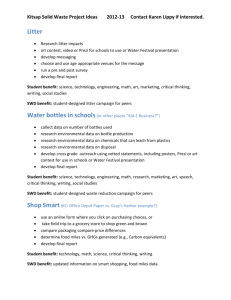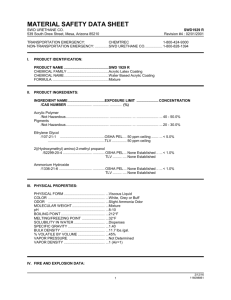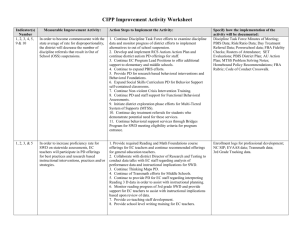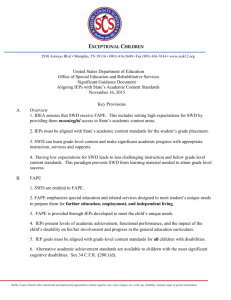Diathermy: Shortwave & Microwave Therapy Presentation
advertisement
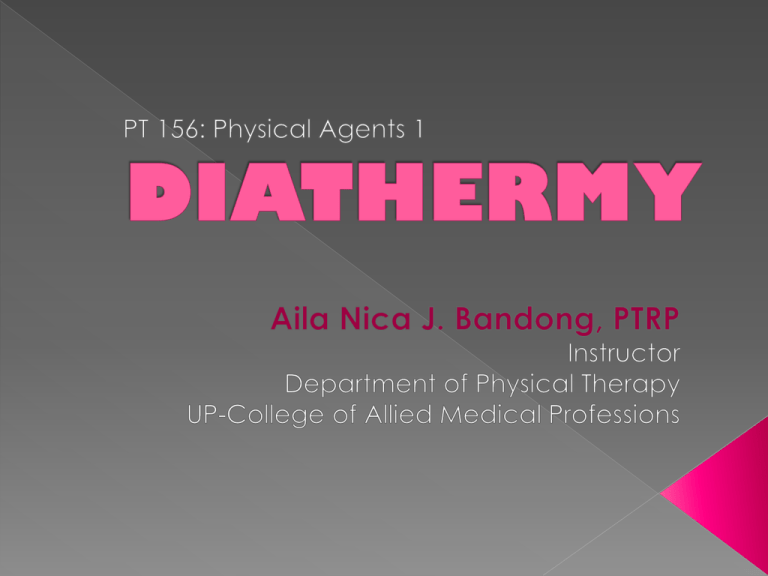
At the end of the lecture, the students should be able to: Define diathermy Identify the parts of the SWD/MWD machine Describe how heat is produced in SWD/MWD Enumerate the therapeutic effects of diathermy Differentiate the types of SWD Enumerate the indications, contraindications, and precautions/guidelines for the use of the modality Use clinical decision making skill in choosing appropriate modality Apply evidence regarding use of SWD/MWD The use of non-ionizing electromagnetic energy from the radio-frequency spectrum as therapeutic agent Long wave - longest wavelength 300 – 30 m - most penetrating - no longer utilized due to high potential of causing burns and interference with radio transmissions Shortwave Microwave Superficial and deep heating modality Frequency - 27.12 MHz Wavelength - 11 m Method of Heat Transfer - Conversion Manner of Delivery - continuous - pulsed Pulse Repetition Rate (PRR) - 15 to 800 Hz Pulse Duration (PD) - 25 to 400 microseconds Peak Pulse Power (PPP) - 100 to 1000 watts Duration - 20 minutes (5-15 acute; 10-20 chronic) 1. Cycle Duration = 1000 / PRR 2. % cycle SWD delivered = (PD x 100) / Cycle Duration 3. Mean Power delivered = PPP x % cycle SWD Dependent on: SPECIFIC ABSORPTION RATE Tissue conductivity charged molecules dipolar molecules non-polar molecules Electrical field magnitude Ions and certain proteins Molecules are accelerated along lines of electric force Most efficient way of heat production + - + - + - + - Water and some proteins Positive pole of the molecule aligns itself to the negative pole of the electric field (vice versa) Moderately efficient heat production Fat cells Electron cloud is distorted but negligible heat is produced Least efficient heat production Blood, having high ionic content, is a good conductor vascular tissues as well Metal and sweat are good conductors if metal implants and sweat are present within the electric field, may cause burn Patient’s tissues are used as DIELECTRIC between the conducting electrodes Oscillation and rotation of the molecules of the tissues produces heat Either flexible metal plates (malleable) or rigid metal discs can be used as electrodes Can be applied in 3 ways: contraplanar, coplanar, or longitudinal Contraplanar - aka Transverse positioning - plates are on either side of the limb Coplanar - plates parallel with the longitudinal section of the body part; same side Longitudinal - plates are placed at each end of the limb No conclusive evidence as to the technique of application that will produce the most effect on the heated tissue (Kitchen and Bazin, 1996) Electrodes should be: Equal in size Slightly larger than the area treated Equidistant and at right angles to the skin surface Patient is in the electromagnetic field or the electric circuit produce strong magnetic field induce electrical currents within the body (EDDY currents) Utilizes either an insulated cable or an inductive coil applicator Monode: coil arranged in one plane Hinged Diplode: permits electrode to be positioned at various angles around the three sides of the body part, or in one plane Some studies argue that inductive diathermy produces greater increase in temperature of deeper tissues compared to condenser/capacitive technique Any deep effects following capacitive technique requires considerable increase in superficial tissue temperature Increase blood flow Assist in resolution of inflammation Increase extensibility of deep collagen tissue Decrease joint stiffness Relieve deep muscle pain and spasm Soft tissue healing - conflicting evidence as regards effectiveness of SWD - controlled animal studies revealed insignificant results as well as trials involving human subjects (Kitchen and Bazin, 1996); to date, no studies in the treatment setting was conducted Recent ankle injuries - inconclusive results following three double-blind protocols (Kitchen and Bazin) Pain Syndromes - Pulsed SWD may provide better pain relief in some musculoskeletal conditions (neck and back) than SWD A. Nerve Regeneration - studies were done on cats and rats - PSWD induced regeneration of axons, acceleration and recovery of nerve conduction B. Osteoarthritis - no established effect C. Post-operative - insignificant (abdominal surgery Superficial and deep heating Frequency: 300 MHz to 300 GHz Wavelength: 1m to 1mm Therapeutic Parameters: A. 122.5 mm – 2456 MHz B. 327 mm – 915 MHz C. 690 mm – 433.9 MHz Dosage: acute 5 to 15 minutes chronic 10 to 20 minutes Direct current (DC) is shunted to the cathode in the magnetron valve Release of electrons from the cathode to the multi-cavity anode valve Electrons oscillate at predetermined frequency High frequency alternating current is transmitted along a coaxial cable Coaxial cable transmits energy to a director Absorbed - energy is taken up by the material Transmitted - pass through the material without being absorbed Refracted - direction of propagation is altered Reflected - turned back from the surface Increased blood flow or circulation to the area Increased tissue temperature Increased metabolism Facilitate relaxation Increased pain threshold Decreased blood viscosity Soft tissue injury Mobilization Pain relief Pacemakers Metal implants Impaired sensation Pregnancy Hemorrhage Ischemic Tissue Testicles and eyes Malignant Active CA TB Fever Thrombosis X-ray exposure Uncooperative patient Areas of poor circulation Operator should observe caution when handling the machine: same contraindications apply Gorgon, E. J. (2004). Lecture notes on high frequency currents: Shortwave and microwave diathermy. University of the Philippines- College of Allied Medical Professions. Hayes, K. W. (1993). Manual for physical agents (4th Ed). Connecticut: Appleton and Lange. Hecox, B., Mehreteab, T. A., and Weisberg, J. (1994). Physical agents: A comprehensive text for physical therapists. Connecticut: Appleton and Lange. Kitchen, S. and Bazin, S. (1996). Clayton’s electrotherapy (10th ed). Philadelphia: W.B. Saunders Company. Low, R. Reed, A. (1995). Electrotherapy explained: Principles and practice (2nd Ed). Oxford: Butterworth-Heinemann Ltd. Michlovitz, S. L. (1996). Thermal agents in rehabilitation (3rd Ed). Philadelphia: F. A. Davis Company.


